This year’s Tribal Colleges and Universities Program Research Symposium featured 45 projects addressing issues important to Native nations.
By Paul Boyer
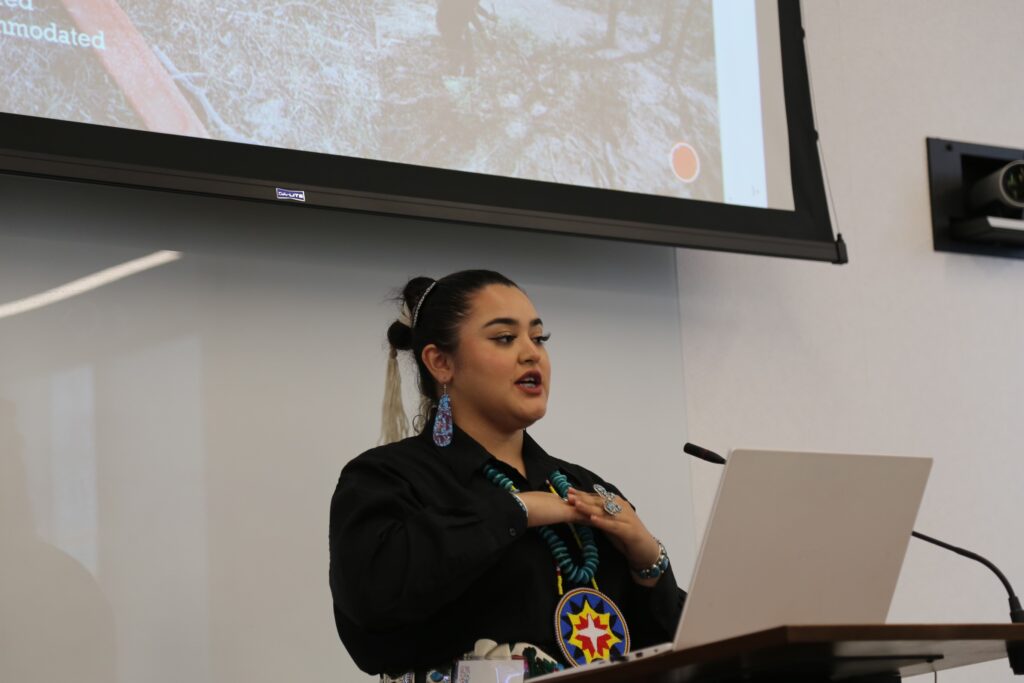
Muskoxen like to graze on land disturbed by mining, treated wastewater can be safely used to irrigate land on the Navajo reservation and a 90-year-old artesian well on the Cheyenne River Reservation plays a vital role in the community, even though the water is not safe to drink.
These are among the findings presented at the 2024 Tribal Colleges and Universities Program Research Symposium, held Feb. 28-29 at the National Science Foundation in Alexandria, Virginia. Organized and facilitated by the Tribal Nations Research Group, the annual symposium spotlights the diversity of student and faculty-led research taking place at tribally controlled colleges and universities, as well as recognized Native-serving institutions.
This year’s gathering featured ten oral and 35 poster presentations from 11 tribal colleges and the University of Alaska Fairbanks Northwest Campus, located in Nome. Represented disciplines ranged from biology, ecology and agriculture to chemistry, engineering and epidemiology.
Water research takes center stage
Multiple researchers addressed issues related to water use. James Swierc, a faculty member at Aaniiih Nakoda College on the Fort Belknap Reservation, who also serves as director of the college’s NSF-funded Water Center, described how faculty and student researchers are studying the Montana reservation’s hydrologic system by tracking water isotopes. “Because the isotopic composition [of water] does not change from the recharge area to the discharge area,” Swierc explained, it is possible to monitor the movement of water from rain and snowpack in the Little Rocky Mountains, which mark the reservation’s southern border, to streams and groundwater in the more arid plains to the north.
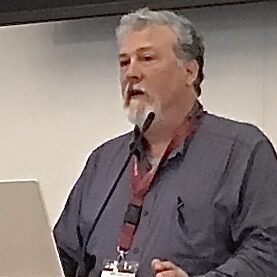
Quantifying water resources and monitoring the health of waterways is part of a larger effort at the college to promote water security, Swierc said. With reliable data, the reservation can defend its rights and protect the health of residents without having to rely on conjecture or outside experts.
Looking for ways to conserve water as the southwest grows hotter and experiences more drought, Dine College faculty member Shazia Tabassum Hakim described how faculty and student researchers are investigating ways to safely recycle wastewater effluent from treatment plants located on the Navajo Reservation and help support decision-making for household and agricultural use. Researchers are currently focused on sampling effluent and explaining the goals of the project within the community.
Hakim noted that some of the greatest barriers to wastewater recycling are psychological; many people find the idea of reusing water unpalatable. She proposed that the most pragmatic next step is to build trust by demonstrating its safe use for activities like “cleaning, washing, and making the communities green.”
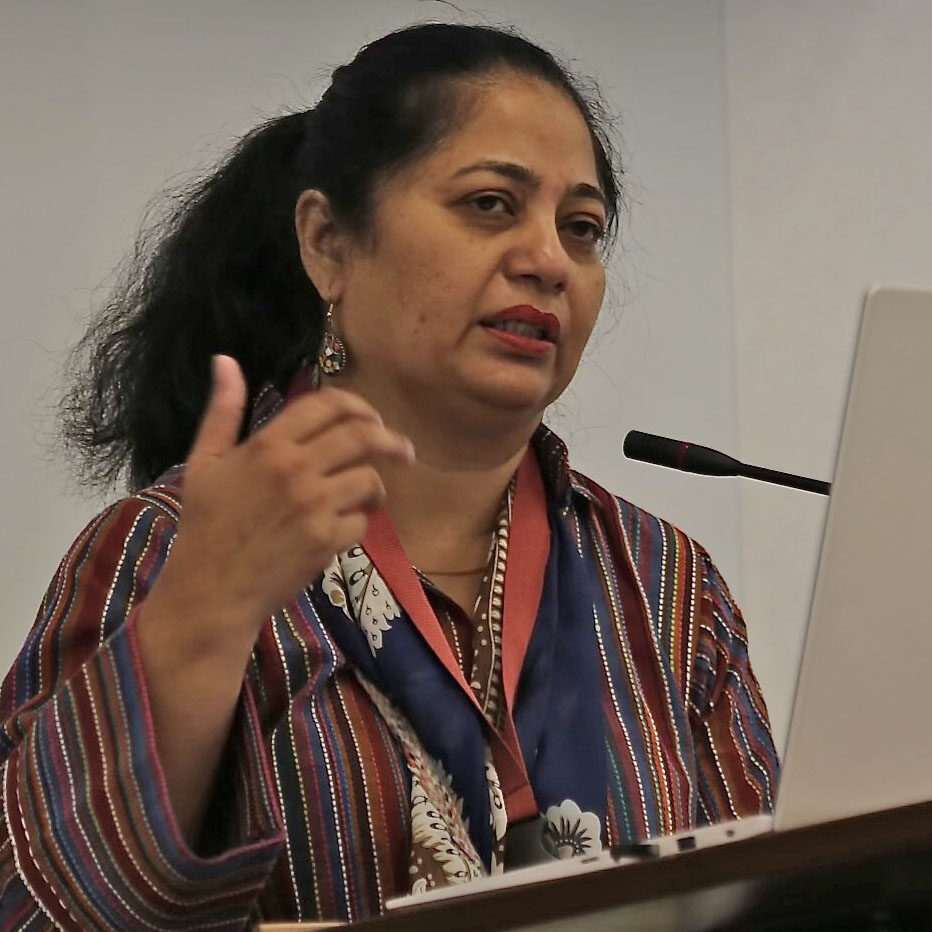
Conversely, Oglala Lakota College student Summer Afraid of Hawk talked about a deep artesian well that is a valued resource in the small Cheyenne River Reservation community of Cherry Creek, even though the water is unsafe to drink. Combining an analysis of groundwater hydrology with sociological and cultural insights, Afraid of Hawk explained that the 2,035-feet deep well, which draws from the Dakota Aquifer, was intended to supply the community with drinking water, but was declared unsafe as soon as it was drilled in 1934.
Flowing from a small pipe at a rate of approximately seven gallons per minute and maintaining a consistent temperature of 104 degrees Fahrenheit, it has, instead, served as a bathhouse and a place to wash clothing, dishes and automobiles. It is also available for fire suppression and other emergencies. Her study, conducted with the support of faculty member J. Foster Sawyer, included analysis of water samples, which documented levels of dissolved solids greatly exceeding EPA standards. She noted that the presence of natural gas makes it possible to ignite the well discharge.
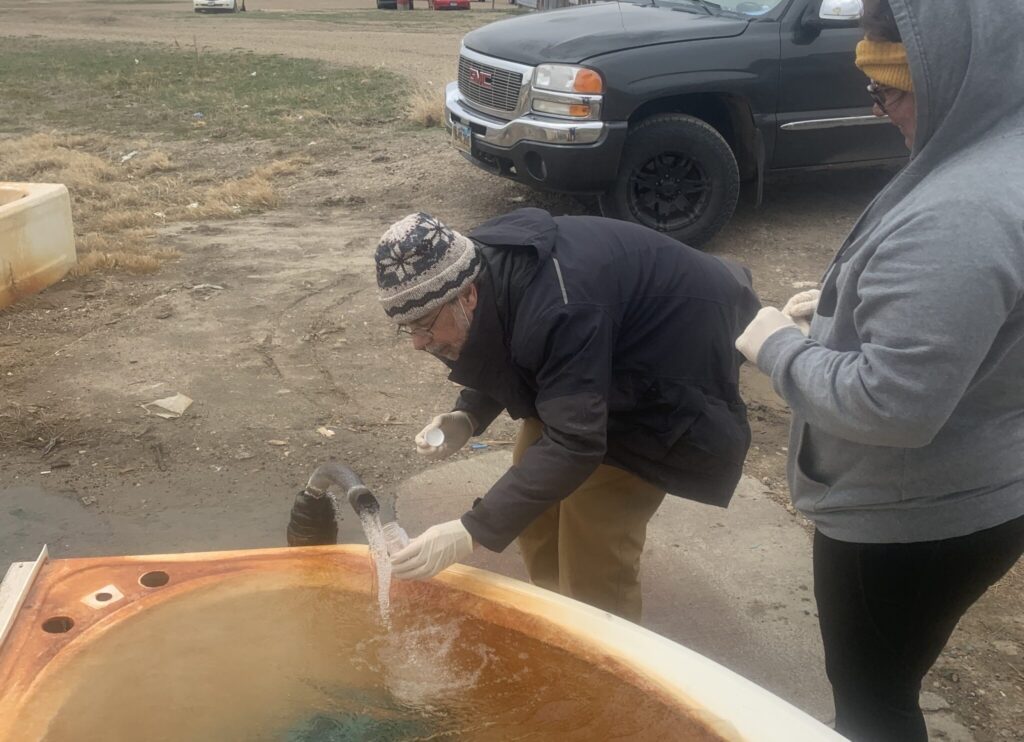
Why do muskox prefer cities?
Among several presentations related to wildlife biology, Claudia Ihl, a faculty member at the Northwest Campus of the University of Alaska Fairbanks in Nome, described how she and student researchers are exploring why muskox, which were reintroduced to the region in 1930 after being extirpated, are now regularly seen within the small city of Nome, the only community in the world to have an “urban” muskox population.
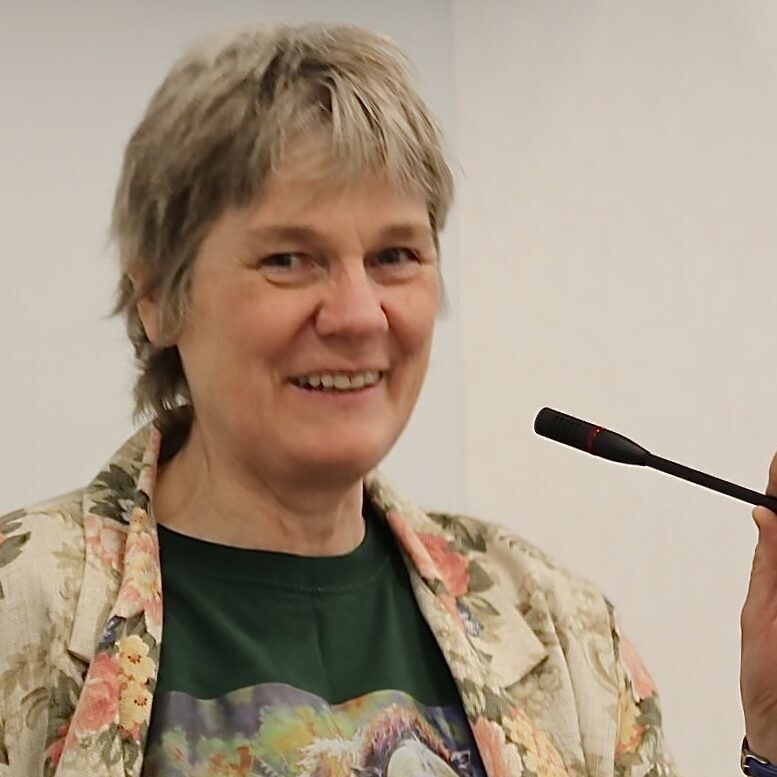
Locals speculate that muskox are seeking shelter from predators, but Ihl’s research, conducted with her students, suggests that they are drawn to forage plants—especially grasses, sedges and water horsetails—more readily found in town and areas disturbed by abandoned gold mining operations. Additionally, Nome generates a warmer microclimate, encouraging plants to emerge earlier in the spring and stay green longer in the fall.
This urban muskox population is both a curiosity and a concern for residents. They are a source of food and tourism dollars. However, the animals can be aggressive when threatened (they have a particular antipathy toward dogs, for example), which means that community education is an important part of Ihl’s work.
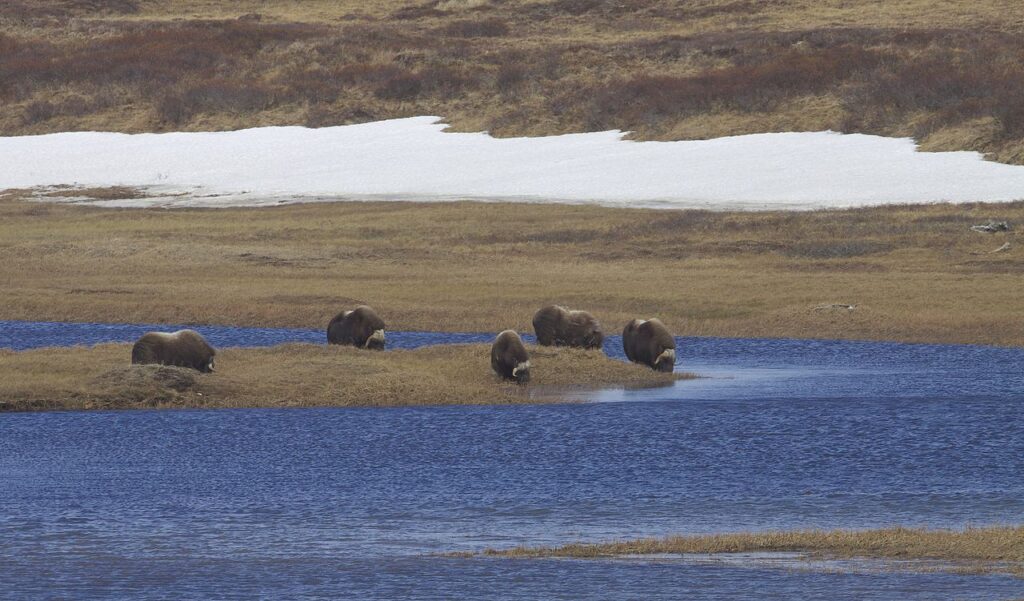
The challenges and rewards of human subject research
In the discipline of epidemiology, Turtle Mountain faculty member Dr. Lyle Best presented findings related to an ongoing study exploring the role of genetics as a risk factor for pre-eclampsia in pregnancy. Since 2004, nearly 900 tribal members have donated a sample of DNA for genetic analysis by Best and student research assistants under his supervision. The most recent research, conducted by student Shyanna LaRocque (who was unable to attend the symposium because of a blizzard), extended the research by testing whether the child’s genetic makeup influences the mother’s risk of pre-eclampsia.
In response to audience questions, Best explained that Native Americans are not at greater genetic risk of pre-eclampsia. Rather, the study is an opportunity to contribute to a larger body of research about a potentially dangerous condition that appears in approximately 6 to 8 percent of pregnancies.
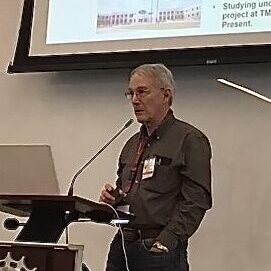
Additionally, Best noted that the project also offers tribal college students a rare opportunity to participate in human subject research, which many faculty and students avoid, fearing the complex approval process and possible objections on cultural grounds. However, Best argued that getting approval from tribes and Institutional Review Boards, while time consuming, should not be a barrier for meaningful research.
Other oral presentations included:
- Endophytic Diversity Response to Climate Change in Navajo Nation Artemisia, presented by Dine College student Jessica Begay
- Balancing Act: Unveiling the Complexities of Arid Forest Management Through Thinning Techniques, presented by Dine College student Josephine D. Bitsui;
- Wolf Predation on Elk Populations in Yellowstone National Park in Relation to Climate Change, presented by Salish Kootenai College graduate student Nathan Woleslagle;
- Cadmium Uptake in Brassica Oleracea: Comparative Analysis of Contaminated Soil and Control Environments, presented by United Tribes Technical College student Tanner Veo;
- ARID1A and TWIST1 Expression Across Bladder Cancer Grades, presented by United Tribes Technical College students Audrey Hall and Kianna Stroh.
Developing research capacity has emerged as a priority at many tribal colleges, where it is used to both enrich the undergraduate learning and—increasingly—to explore significant issues important to the communities they serve.
Paul Boyer is editor of Native Science Report
Story published March 13, 2024
• • •
Enjoyed this article? Enter your email to receive notifications.
